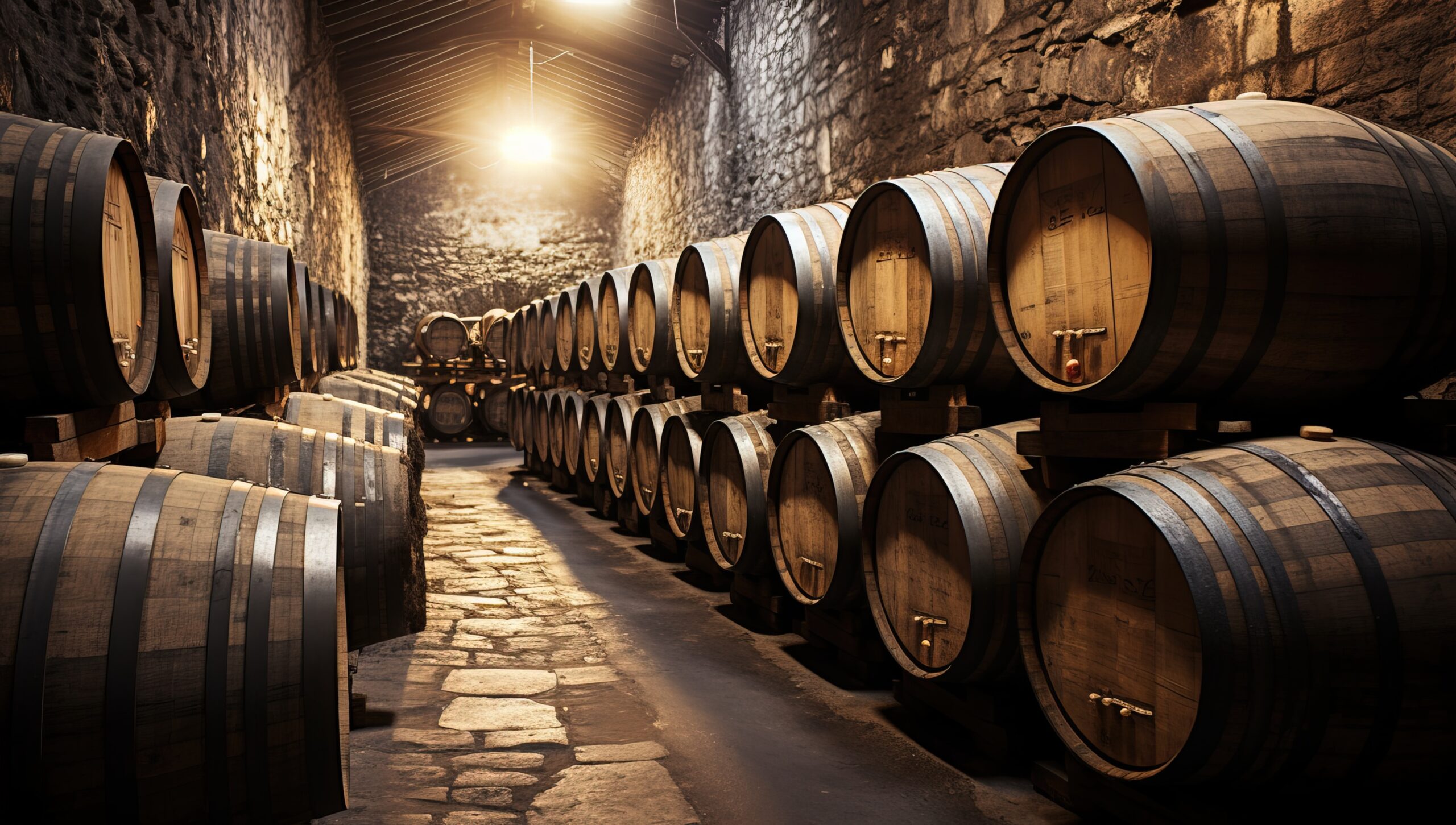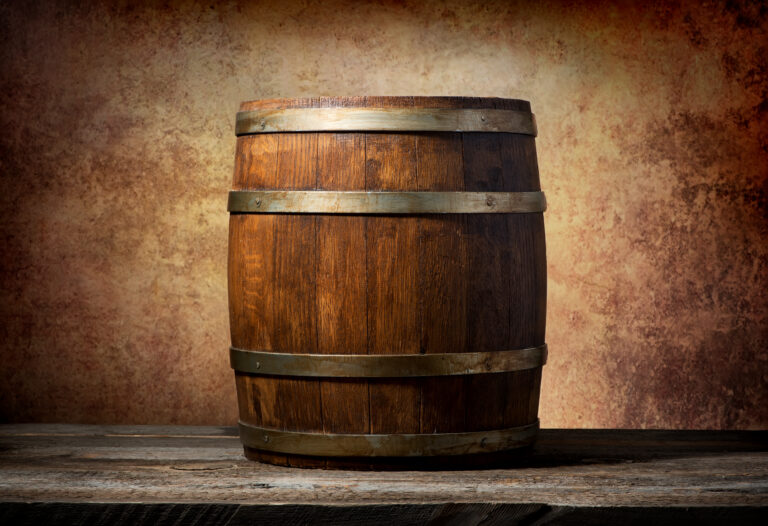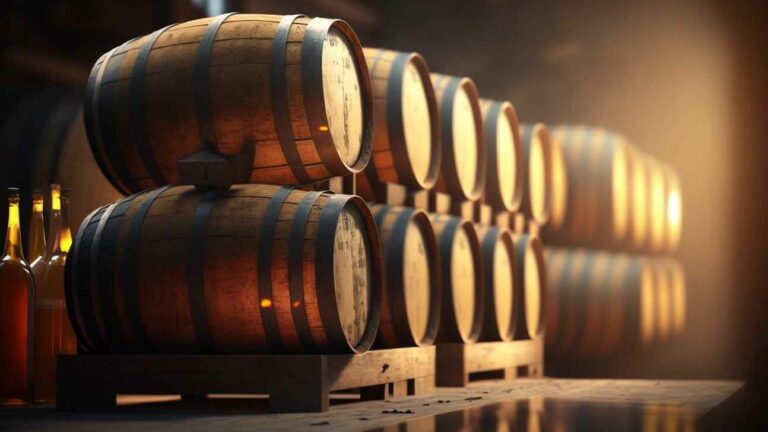Hey there! Have you ever wondered how whiskey gets its rich, complex flavor? It’s not magic—it’s barrel aging. After being distilled, whiskey is poured into charred oak barrels, where it hangs out for years, sometimes even decades. During this time, the whiskey soaks up incredible flavors and aromas from the wood, like vanilla, caramel, and spice. The longer it ages, the smoother and more nuanced the flavor becomes.
Aging whiskey at home gives you the ultimate control. You can customize the flavor and decide exactly when your whiskey has reached that perfect balance of smoothness and robust flavor. While you can find small barrels at most homebrew supply stores, a charred 5-gallon oak barrel will give you the fullest flavor profile.
Be warned, though—aging whiskey requires patience. Most whiskeys need at least 6-24 months to develop a truly great flavor. But trust me, when you finally bottle and taste the results of your hard work, you’ll experience a whole new level of appreciation for a craft whiskey. Your friends will be blown away that you made something so sophisticated.
Ready to dive in? This guide will walk you through the easy steps to age your own whiskey in a barrel at home. In just a few months, you’ll be enjoying a whiskey that’s uniquely tailored to your taste.
Selecting the Right Barrel for Whiskey Aging
The barrel you choose has a huge impact on your final aged whiskey. For the best results, go with charred white American oak barrels. Oak has been used for centuries to impart subtle flavors of vanilla and spice, and charring the inside of the barrel really helps to enrich these notes in your whiskey.
Smaller barrels mean more surface area for the whiskey to interact with the wood, which speeds up the aging process. A 5-gallon barrel can have whiskey tasting great in just 6-12 months, while a standard 53-gallon barrel takes 2-5 years. For your first batch, a small barrel is the way to go—you get to sample your creation sooner!
If you’re considering a used barrel, be very careful. Make sure it was properly cleaned and re-charred. Any leftover residue from wine, beer, or other spirits will absolutely affect your whiskey’s flavor. For beginners, it’s always best to start with a new, properly charred small barrel.
The right barrel is one of the most important factors for how your barrel-aged whiskey will turn out. Do some research on different types of wood and char levels to find what sounds good to you. Remember, while aging whiskey at home takes patience, the rewards of enjoying your own handcrafted spirit are well worth the wait!
Preparing the Barrel Before Use
To get your barrel ready for aging, you need to clean and sterilize it. Start by giving the inside a good rinse with hot water to remove any dust or residue.
Next, you’ll need to create a sterilizing solution. You can use a mix of water and distilled white vinegar or potassium metabisulfite powder. Swish the solution around to coat the entire inside of the barrel and let it sit for at least 30 minutes to kill any lurking microbes.
Rinse the barrel again with hot water until the water runs completely clear. This is an important step to make sure the sterilizing solution doesn’t mess with the flavor of your home-aged whiskey.
Now, let the barrel air dry completely. This usually takes 3 to 5 days. The goal is to get the wood bone dry so it doesn’t dilute your whiskey.
Once it’s dry, you can toast the inside of the barrel with a small fire or blowtorch to caramelize the wood sugars. This enhances the flavors that will be imparted to your whiskey. Be super careful and never leave the barrel unattended during this step.
Your barrel is now sterilized, dried, and toasted—ready for your whiskey! Fill ‘er up, seal it tight, and let the aging magic begin. In just a few months, you’ll have a wonderfully aged whiskey to enjoy thanks to all your hard work.
Filling the Barrel With Whiskey
Once your barrel is prepped, it’s time to fill it! Pour the whiskey you want to age into the barrel. For the best results, use a high-quality whiskey like bourbon, rye, or scotch.
Carefully fill the barrel until it’s about 3/4 full. As the whiskey ages, some of it will evaporate—this is called the “angel’s share”. Leaving that extra space allows for this. Once it’s filled, seal the barrel tightly.
Place the barrel in a spot with a consistent temperature, away from direct sunlight. The ideal aging temperature is between 55 to 65°F. Colder temperatures will slow down the aging, while warmer temps will speed it up.
Flip and rotate the barrel every few months to ensure the whiskey ages evenly. After 6-12 months, you can start sampling the whiskey regularly to see when it’s just right for you. You’ll notice the color of your whiskey darkens and the flavor becomes smokier and oakier over time.
Once it’s reached your desired age and taste, bottle it up and enjoy your custom-aged whiskey! This whole process lets you create a unique spirit tailored exactly to your tastes. With a little experimenting, you’ll be making your own top-shelf whiskey in no time.
Storing the Barrel in Optimal Conditions
Finding the right storage conditions is crucial for developing your whiskey’s flavor. Store the barrel in a spot with a consistent temperature, away from direct heat or sunlight. A basement or garage is usually ideal.
Fluctuating temperatures can impact how quickly the whiskey ages and develops those characteristic flavor compounds. It’s also a good idea to keep the barrel off concrete floors, which can cause temperature shifts. Wood or metal racks are best.
Ensure the barrel is on its side with the bung facing up. This keeps the charred inner wood saturated. Rotate the barrel a quarter turn once a month so the whiskey has even contact with all the wood.
Check on your barrel regularly. Make sure the bung is secure so air doesn’t get in. Air exposure causes oxidation and evaporation, which changes the flavor profile.
After aging for at least 2 years in a small barrel, you’ll be rewarded with a rich, mellow whiskey to enjoy on its own or in cocktails. The aging process transforms the spirit into something new and complex. Patience pays off!
Monitoring and Tasting the Whiskey Periodically
As your whiskey ages in the barrel, it’s important to check on it regularly. Every 4 to 6 weeks, you’ll want to sample it to monitor how the flavor is developing. Use a whiskey thief to extract a small sample from the barrel.
Swirl the whiskey in your glass to release the aromas and note how they’ve changed since the last tasting. Take small sips and pay attention to the flavors on your tongue and at the back of your mouth. Is it sweeter or smokier? Fruitier or spicier?
Keep records of each tasting to track how the flavor profile evolves over time. When it reaches your desired flavor, usually after at least 6-12 months, the whiskey can be bottled and enjoyed. If after a year it’s not quite there yet, keep aging and tasting—up to 5 years total.
Some barrels may need more time, while others are ready sooner. Each batch of whiskey ages differently depending on the type of wood and char level. Your tasting notes will help you decide when it’s truly aged to perfection.
Determining When the Whiskey Is Finished Aging
To know when your whiskey has reached its peak flavor, you need to sample it regularly. As a general rule, whiskey aged 2-5 years tends to be lighter and smoother, while aging 10-15 years results in a richer, more complex flavor.
Every few months, drain a small amount of whiskey from the barrel and taste it. Notice how the flavor evolves and intensifies. Initially, the whiskey will be harsh, but it will eventually mellow into smoothness. Eventually, it will become very woody and full-bodied. Once it hits a point that you find pleasing, it’s ready to bottle. Some signs it may be finished aging include:
- The whiskey has taken on a rich, golden amber hue.
- The aroma has clear notes of vanilla, caramel, or oak.
- The flavor is smooth, rounded, and mellow. The harsh edges have softened.
- Oak flavors like cinnamon and clove have infused into the whiskey.
The precise aging time will depend on environmental factors like temperature and humidity, the char level of the barrel, and your personal taste. The key is not to over-age the whiskey, or it can become overly oaky. When you’ve found the “sweet spot,” it’s best to bottle your whiskey so you can enjoy its peak flavor.
Removing the Whiskey From the Barrel
Once your whiskey has aged to your desired taste, it’s time to bottle it. Before you get to the bottles, you’ll need to get the spirit out of the barrel.
Draining the Barrel
To drain the barrel, place it on its side with the bunghole facing down. Remove the bung and let the whiskey flow into a container. For the first few minutes, the flow will be strong. Prop up one end of the barrel slightly so the flow is controlled and doesn’t overwhelm your container.
As the barrel empties, flip it to the opposite side to drain the rest of the whiskey. When the flow slows to drips, your barrel is nearly empty.
Rinsing the Barrel
Once drained, rinse the inside of the barrel with water to remove any sediment. Fill it about 1/4 full, seal and shake, then drain again. Repeat this until the water runs clear.
Planning Your Next Batch
If you plan to reuse the barrel, rinse it with a sulfur dioxide solution or citric acid to prevent mold growth before the next fill. For a new spirit, consider the flavor compounds left in the wood from your aged whiskey. The next batch may take on subtle notes, creating a harmonious blend of flavors. A used barrel is ideal for finishing a young spirit, as it can mellow out rough edges and impart oak character quickly.
Your homemade whiskey is now ready to bottle and enjoy! Savor the fruits of your labor and the lessons learned for making the next exceptional batch.
Finishing and Bottling the Aged Whiskey
After at least 6-12 months of barrel aging, you’re ready to bottle. Carefully siphon or filter the whiskey from the barrel into sterilized bottles. Use a funnel to avoid spills. Seal the bottles with corks or cappers and let them sit for 2 weeks so the whiskey can mellow.
Your homemade barrel-aged whiskey is now ready to enjoy! The aging and bottling process allows those complex flavors to develop fully. Savor and appreciate all the subtle notes in each sip. Share with friends, or keep it all to yourself—you deserve it!
The key is allowing enough time for the whiskey to mature in the barrel. Don’t rush the aging process. Take your time and only bottle when the whiskey reaches your desired flavor and aroma. If bottled too soon, the whiskey won’t have enough oak character and may taste harsh. But with patience, you’ll be rewarded with a smooth, aged spirit to be proud of.
Enjoying Your Barrel-Aged Whiskey
Now for the fun part—actually drinking your barrel-aged whiskey! The aging process enhances the flavor in so many ways. Notes of vanilla, caramel, and oak will come through, mellowing the spirit.
Pour yourself a dram and take a moment to appreciate the color. Barrel aging gives whiskey a warm amber glow. Swirl the glass gently, releasing the built-up aromas. You might detect scents of dried fruits, nuts, or warm spices.
Take a small sip and let the whiskey coat your mouth. Flavors of molasses, maple, or toasted nuts may emerge. Barrel aging introduces tannins that provide a slight bitterness to balance the sweetness. The finish just lasts and lasts.
Adding a few drops of water can open up the flavor even more. As the water dilutes the whiskey, different aromas and tastes emerge that were hidden before. Try it with and without water to experience the transformation.
Your homemade barrel-aged whiskey is meant to be enjoyed leisurely. Savor each glass, appreciating how the flavor develops over weeks, months, and years of patient aging and care. The time and effort that went into crafting this spirit will make each tasting all the more rewarding. You can proudly share it with friends, or keep it all to yourself—you deserve it!
Final Thoughts
So there you have it—the complete guide to aging your whiskey in a barrel at home. It may seem like a complex process, but by following these simple steps, you’ll be well on your way to enjoying a smooth, aged spirit in no time. All that’s left to do now is get yourself a barrel, source some good whiskey, and start the aging process. Before you know it, you’ll have a batch of homemade aged whiskey ready to enjoy.
Maybe you can even share a glass with friends and family and tell them tales of your whiskey-making adventures. However you choose to enjoy the fruits of your labor, you can rest assured knowing you crafted an artisanal spirit from scratch using time-honored traditions. Not bad for an amateur whiskey maker! What are you waiting for? Get started on your aging journey today. The rewards will be oh-so-sweet.







